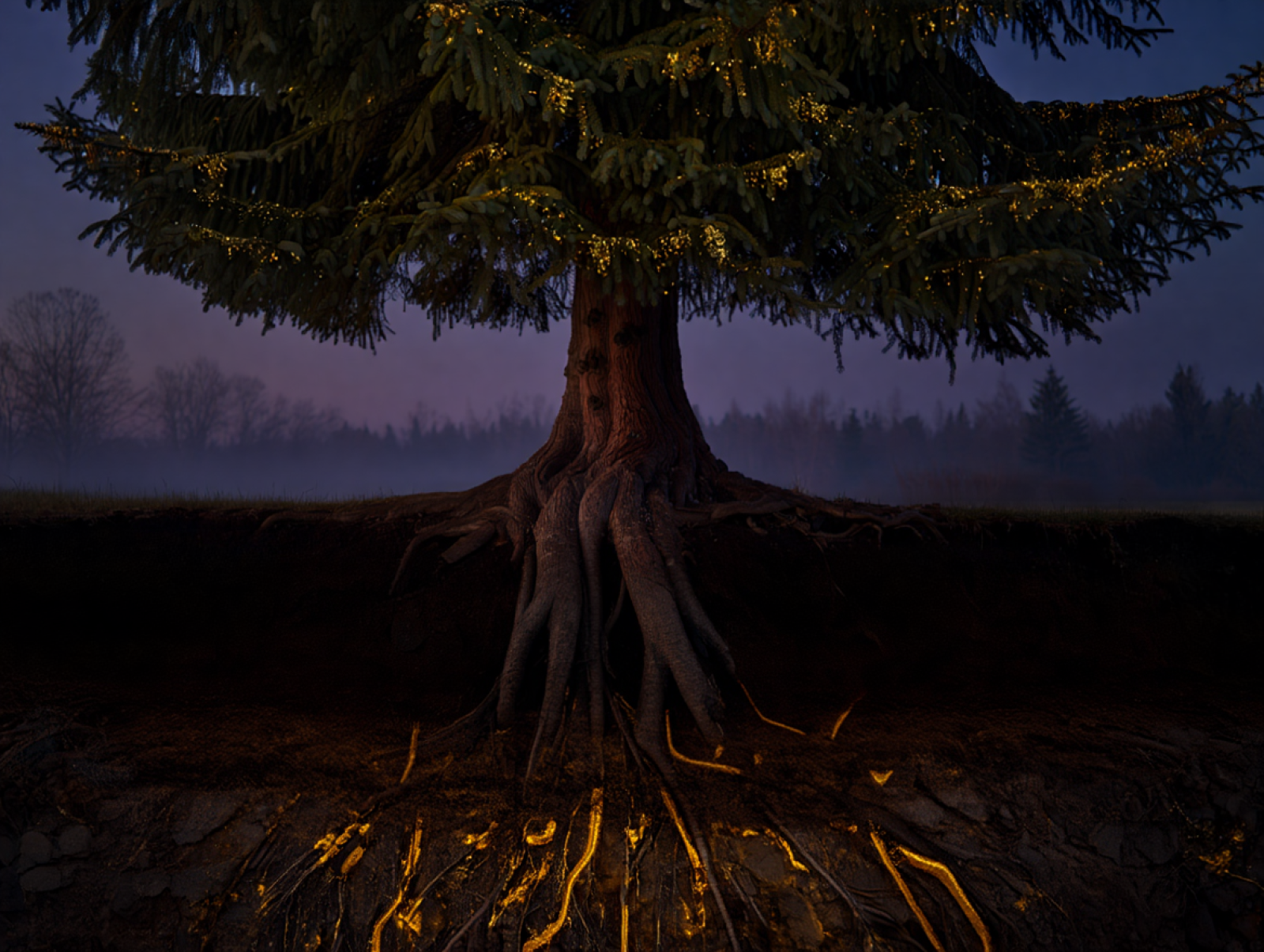🌲 Gold literally grows on these trees
Published by Cédric,
Article author: Cédric DEPOND
Source: Environmental Microbiome
Other Languages: FR, DE, ES, PT
Article author: Cédric DEPOND
Source: Environmental Microbiome
Other Languages: FR, DE, ES, PT
Follow us on Google News (click on ☆)
The journey of gold
Gold present in the soil dissolves in groundwater to become soluble. In this form, it is absorbed by the spruce's roots and then the natural sap flow transports these metal ions to the aerial parts. This journey ultimately ends in the needles, where gold is potentially toxic to the tree.

Endophytic bacteria, which live in symbiosis inside plant tissues, then play an important role: their biofilms locally modify the chemical conditions around them. This microenvironmental alteration promotes the precipitation of dissolved gold. The metal ions then transform into solid, inert nanoparticles.
This transformation represents a natural detoxification mechanism for the plant: by solidifying the gold, it neutralizes an element potentially harmful to its metabolism. Only a minority of trees actively develop this process. This selectivity explains the rarity of nanoparticle observations in needles.
A distinctive bacterial signature
Observation of the needles reveals a close link between gold and certain bacteria. Gold nanoparticles are always found near active microbial communities. These microorganisms build biofilms, true sticky shelters where they live together. This constant proximity suggests intimate collaboration to trap gold.
Genetic analysis precisely identifies the actors in this process. In needles containing gold, bacteria such as Cutibacterium are much more numerous. These species appear to possess a unique ability to transform liquid gold into solid particles, so their abundant presence signals ongoing biomineralization.
This discovery offers promising applications for searching for gold deposits in soil. Studying bacteria present in plants could guide mining explorations. This natural method would advantageously complement traditional techniques: it would allow for prospecting that is both more precise and more environmentally friendly.
To go further: How do trees absorb metals?
Trees naturally draw metals present in their environment through a continuous process that begins in the soil. Their roots absorb water that contains, in addition to essential nutrients, various dissolved mineral elements like metal ions. This aqueous mixture then circulates throughout the plant via a network of specialized vessels, similar to a circulatory system. It thus transports metals from the roots to the most distant parts, such as leaves or needles.
The amount of metals that accumulate in tissues depends on several environmental and biological conditions. The availability of elements in the soil and its acidity are determining factors in this process. Furthermore, each tree species, and even each individual, has its own absorption and tolerance capabilities. Certain plants, qualified as hyperaccumulators, show exceptional performance in this area.
This natural ability is exploited by geologists in a technique called bioprospecting. Chemical analysis of vegetation allows them to indirectly detect the presence of mineral deposits deep underground. This method represents an ecological approach to exploring the subsurface without having to dig immediately.